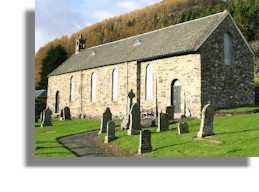
The abbacy of Adomnán was the high point of the Columban mission to the Picts. Dedications to him are far more widespread than to any other figure in the Ionan mission save for Columba himself. They extend from west to east across the face of modern-day Scotland, from the peninsula of Kintyre in south-west Argyll to the furthest tip of the north-eastern mainland in Aberdeenshire. The bulk of them lie in Pictland itself, from the Ythan estuary, near Ellon in Aberdeenshire, to the shores of the Forth. (The graphic on the right by Iain Macauley, via Wikimedia, is Dull parish church in the heart of Perthshire built on the site of an early Christian monastery founded by St Adomnán. Several early Christian cross-slabs dating to the 7th or 8th century have been discovered in and around the parish graveyard).
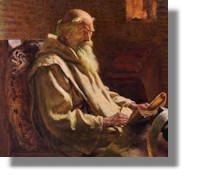
The real apostle to the Picts was not Columba but Adomnán, the prime mover of the cult of Colum Cille. The commentary of Bede (graphic here is via Wikimedia), written within twenty years of his death, is silent testimony to the success of this, the most self-effacing of all Scottish saints. Adomnán's impact may also be measured, and perhaps more reliably, by his contact with kings and the aristocracy, not only of Ireland and Dalriada, but of Pictland and Northumberland as well. Columba had been influential at the Convention of Druim Cett in 575; the best measure of the widespread respect in which Adomnán was held is the Synod of Birr (in Co. Offaly) of 697 where his 'Law of the Innocents' was promulgated. This Law, which gave protection to women, children and the clergy against the brutalities of Dark Age warfare, would be ratified by the kings of the Picts and the Dalriadic Scots, and perhaps also by the King of Strathclyde, as well as by a long list of kings in Ireland. It is singular testimony to the widespread common Celtic (and now Christianised) culture extending from Ireland across Dalriada and Pictland to Lindisfarne and it marks the peak of the pan-Celtic influence of the Ionan paruchia.
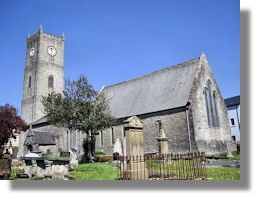 The widespread acceptance of Adomnán's Law showed the Church acting in concert with kings. Sainthood was itself the reflection of the patronage of secular kings: it was, in a sense, the honours list of Irish and other kings. Adomnán was an abbot of Iona but also, like Columba, a kinsman of the Irish dynasty of Cénel Conaill. In the eighty-two years which separated Columba's death and Adomnán's elevation in 679, all but one of Columba's successors had come from his own kindred. But Adomnán, who was probably over fifty and had not been a monk of Iona before his elevation, was more than this. He was of a different line in the Cénel Conaill family than Columba and his previous successors, and was directly related to the northern ruling dynasty. His period as abbot (679-704) saw Iona linked more closely than ever to this Irish royal house, as well as better connected to reopen negotiations with Northumbria. Adomnán, as a result, would within a few decades of his death achieve saintly status. As early as 727, his relics had begun to be transported across the Ionan paruchia in a portable shrine. Both Columba and Adomnán can also lay claim to a status something like that of a royal saint. The graphic on the left from Wikimedia is Raphoe Cathedral in Ireland, dedicated to Adomnán
The widespread acceptance of Adomnán's Law showed the Church acting in concert with kings. Sainthood was itself the reflection of the patronage of secular kings: it was, in a sense, the honours list of Irish and other kings. Adomnán was an abbot of Iona but also, like Columba, a kinsman of the Irish dynasty of Cénel Conaill. In the eighty-two years which separated Columba's death and Adomnán's elevation in 679, all but one of Columba's successors had come from his own kindred. But Adomnán, who was probably over fifty and had not been a monk of Iona before his elevation, was more than this. He was of a different line in the Cénel Conaill family than Columba and his previous successors, and was directly related to the northern ruling dynasty. His period as abbot (679-704) saw Iona linked more closely than ever to this Irish royal house, as well as better connected to reopen negotiations with Northumbria. Adomnán, as a result, would within a few decades of his death achieve saintly status. As early as 727, his relics had begun to be transported across the Ionan paruchia in a portable shrine. Both Columba and Adomnán can also lay claim to a status something like that of a royal saint. The graphic on the left from Wikimedia is Raphoe Cathedral in Ireland, dedicated to Adomnán
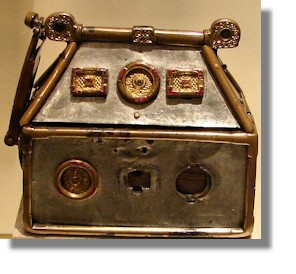
The official adoption of a cult of Adomnán, marked by the conservation of his relics, directly copied the pattern of the original cult of Columba. The famous Brecbennach of Columba, a house-shaped portable shrine for his relics, which later somehow became associated with Monymusk in Aberdeenshire, became the most visible and potent symbol of the post-Columban Church. The Monymusk reliquary (pictured here) and other emblems of Columba would he carried into battle not only by kings of Dalriada but also by later kings of Scots. His crozier or bachall would accompany the armies of Constantine II which defeated Ivar II and his Vikings somewhere in Fortriu in 903 and Ragnall, Norse King of York, at the Tyne in 918. The Brechennach would even be carried before the army of Robert Bruce at Bannockburn in 1314. But in 1314 the Scots went not with one patron saint but two, for they also carried with them the banner of St Andrew. This cult of twin national saints had begun five centuries before Bannockhurn, amidst the complicated politics, both secular and ecclesiastical, of the kingdom of the Picts.
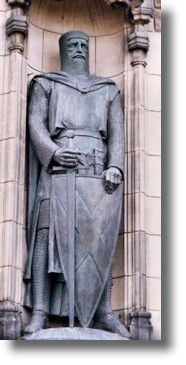
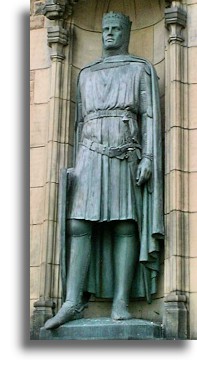
The widespread acceptance of Adomnán's Law showed the Church acting in concert with kings. Sainthood was itself the reflection of the patronage of secular kings: it was, in a sense, the honours list of Irish and other kings. Adomnán was an abbot of Iona but also, like Columba, a kinsman of the Irish dynasty of Cénel Conaill. In the eighty-two years which separated Columba's death and Adomnán's elevation in 679, all but one of Columba's successors had come from his own kindred. But Adomnán, who was probably over fifty and had not been a monk of Iona before his elevation, was more than this. He was of a different line in the Cénel Conaill family than Columba and his previous successors, and was directly related to the northern ruling dynasty. His period as abbot (679-704) saw Iona linked more closely than ever to this Irish royal house, as well as better connected to reopen negotiations with Northumbria. Adomnán, as a result, would within a few decades of his death achieve saintly status. As early as 727, his relics had begun to be transported across the Ionan paruchia in a portable shrine. Both Columba and Adomnán can also lay claim to a status something like that of a royal saint. The graphic on the left from Wikimedia is Raphoe Cathedral in Ireland, dedicated to Adomnán






